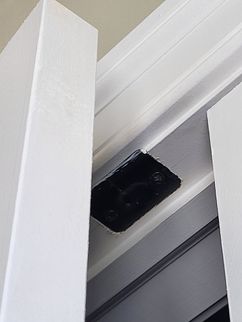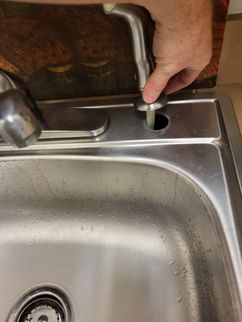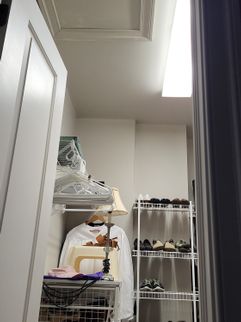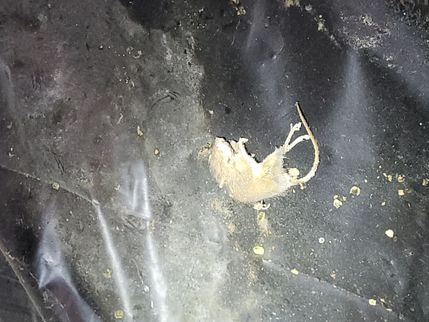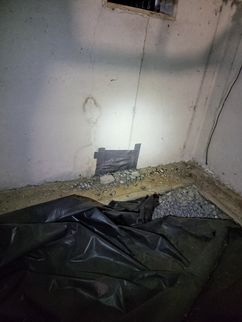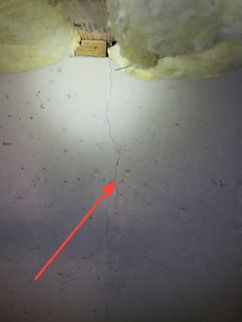The Scope and Purpose of a Home Inspection
Purchasing property involves risk
The purpose of a home inspection is to help reduce the risk associated with the purchase of a structure by providing a professional opinion about the overall condition of the structure. A home inspection is a limited visual inspection and it cannot eliminate this risk. Some homes present more risks than others. We cannot control this, but we try to help educate you about what we don’t know during the inspection process. This is more difficult to convey in a report and one of many reasons why we recommend that you attend the inspection.
A home inspection is not an insurance policy
This report does not substitute for or serve as a warranty or guarantee of any kind. Home warranties can be purchased separately from insuring firms that provide this service.
A home inspection is visual and not destructive
The descriptions and observations in this report are based on a visual inspection of the structure. We inspect the aspects of the structure that can be viewed without dismantling, damaging or disfiguring the structure and without moving furniture and interior furnishings. Areas that are concealed, hidden or inaccessible to view are not covered by this inspection. Some systems cannot be tested during this inspection as testing risks damaging the building. For example, overflow drains on bathtubs are generally not tested because if they were found to be leaking they could damage the finishes below. Our procedures involve non-invasive investigation and non-destructive testing which will limit the scope of the inspection.
This is not an inspection for code compliance
This inspection and report are not intended for city / local code compliance. During the construction process structures are inspected for code compliance by municipal inspectors. Framing is open at this time and conditions can be fully viewed. Framing is not open during inspections of finished homes, and this limits the inspection. All houses fall out of code compliance shortly after they are built, as the codes continually change. National codes are augmented at least every three years for all of the varying disciplines. Municipalities can choose to adopt and phase in sections of the codes on their own timetables. There are generally no requirements to bring older homes into compliance unless substantial renovation is being done.
This is just our opinion
Construction techniques and standards vary. There is no one way to build a house or install a system in a house. The observations in this report are the opinions of the home inspector. Other inspectors and contractors are likely to have some differing opinions. You are welcome to seek opinions from other professionals.
The scope of this inspection
This inspection will include the following systems: exterior, roof, structure, drainage, foundation, attic, interior, plumbing, electrical and heating. The evaluation will be based on limited observations that are primarily visual and non-invasive. This inspection and report are not intended to be technically exhaustive.
Your expectations
The overall goal of a home inspection is to help ensure that your expectations are appropriate with the house you are proposing to buy. To this end we assist with discovery by showing and documenting observations during the home inspection. This should not be mistaken for a technically exhaustive inspection designed to uncover every defect with a building. Such inspections are available but they are generally cost-prohibitive to most homebuyers.
Your participation is requested
Your presence is requested during this inspection. A written report will not substitute for all the possible information that can be conveyed verbally by a shared visual observation of the conditions of the property.
How to Read This Report
Getting the Information to You
This report is designed to deliver important and technical information in a way that is easy for anyone to access and understand. If you are in a hurry, you can take a quick look at our "Summary Page” and quickly get critical information for important decision making. However, we strongly recommend that you take the time to read the full Report, which includes digital photographs, captions, diagrams, descriptions, videos and hot links to additional information.
The best way to get the layers of information that are presented in this report is to read your report online (the HTML version), which will allow you to expand your learning about your house. You will notice some words or series of words highlighted in blue and underlined – clicking on these will provide you with a link to additional information. The HTML version of this report also contains streaming videos. Short video clips often contain important information and critical context and sounds that can be difficult to capture in words and still pictures.
For the most reliable viewing experience, I recommend viewing the report on as large a screen as practical, as much detail can be lost on small devices like smart phones. For similar reasons, reports should only be printed in color to retain as much detail as possible and minimize misinterpretation of photographs.
This report can also be printed on paper or to a PDF document.
Chapters and Sections
This report is divided into chapters that parcel the home into logical inspection components. Each chapter is broken into sections that relate to a specific system or component of the home. You can navigate between chapters with the click of a button on the left side margin.
Most sections will contain some descriptive information done in black font. Observation narrative, done in colored boxes, will be included if a system or component is found to be significantly deficient in some way or if we wish to provide helpful additional information about the system or the scope of our inspection. If a system or component of the home was deemed to be in satisfactory or serviceable condition, there may be no narrative observation comments in that section and it may simply say “tested,” or “inspected.”
Observation Labels
All narrative observations are colored, numbered and labeled to help you find, refer to, and understand the severity of the observation. Observation colors and labels used in this report are:
- Repair:Repair and maintenance items noted during inspection. Please note that some repair items can be expensive to correct such as re-finishing hardwood floors, but are considered simply repair items due to their cosmetic nature.
- Improve:Observations that are not necessarily defects, but which could be improved for safety, efficiency, or reliability reasons.
- Monitor:Items that should be watched to see if correction may be needed in the future.
- Note:Refers to aside information and /or any comments elaborating on descriptions of systems in the home or limitations to the home inspection.
- Description:Detailed description of various aspects of the property noted during the inspection.
Pest Inspection
All items with the bug logo () are part of a structural pest inspection. If your inspector included a structural pest inspection as a part of the scope of your home inspection, you can distinguish pest inspection items by this logo. You can also go to the pest inspection summary page to see a summary of the items that are part of a pest inspection.
Summary Page
The Summary Page is designed as a bulleted overview of all the observations noted during inspection. This helpful overview is not a substitution for reading the entire inspection report. The entire report must be read to get a complete understanding of this inspection report as the Summary Page does not include photographs or photo captions.
Moisture Meter Testing
Where moisture meter testing is indicated in this report a Protimiter Survey Master Dual Function was used.
Summary
Repairs
- G-2 Grounds:
Downspouts are discharging adjacent to the foundation. This can cause foundation settlement or crawl space moisture problems. Make sure all downspouts discharge into a proper tight-line system that diverts water at least 5 feet away from the foundation.
- Downspouts are discharging next to the foundation around the entire home
- G-3 Grounds:
Typical cracking (and evidence of past repair) was noted on all exterior concrete surfaces. Recommend sealing these cracks to prevent moisture intrusion, which will cause widening/spreading of these cracks over time.
- G-4 Grounds:
An active yellow jacket nest was noted in the mulch on the east side of the home. Recommend removal by a qualified pest control expert.
- ED1-1 Exteriors and Decks:
Cracks in brick veneer were noted near the bottom of the door frame on the east side of home. Recommend sealing these cracks to prevent moisture intrusion and further deterioration.
- ED1-3 Exteriors and Decks:
The exterior door on the east side of the home showed signs of rot at the bottom of the frame and paint deterioration at the top of the frame. This door was also missing about 1/2" of weather strip at the top of the frame. Recommend rot repair/frame replacement by a qualified contractor. Recommend that the homeowner replace weather strip and apply new paint.
- ED1-4 Exteriors and Decks:
Missing caulk was noted on one of the west facing windows near the heat pump. Recommend re-sealing this area to prevent moisture intrusion.
- ES1-1 Electric Service:
Double lugging was noted among ground and neutral wires on the bus bar. Although a common observation, this is a potential fire hazard. Recommend evaluation/repair by a qualified electrician.
- EDFW-1 Electric Distribution and Finish Wiring:
The outdoor receptacles on the east and west sides of the house were not operating at the time of inspection. These GFCI receptacles showed as "tripped" (as indicated by the yellow light), but would not reset. Recommend evaluation by a qualified electrician.
- EDFW-2 Electric Distribution and Finish Wiring:
The light in the front study room ceiling fan was inoperative. This is likely the light bulb(s) but could be operating controls or other issues. Repair as needed so the light in the ceiling fan is operating.
- HCFV-2 Heating, Cooling, Fireplaces and Ventilation:
The condensate line for the air handler terminated outside near the foundation. As with gutter downspouts, recommend having this extended five feet away from home to prevent moisture intrusion into the foundation.
- HCFV-3 Heating, Cooling, Fireplaces and Ventilation:
Gaps were found in the sealant where the HVAC line set enters the foundation. Recommend re-sealing to prevent intrusion from moisture and/or pests.
- HCFV-4 Heating, Cooling, Fireplaces and Ventilation:
The living room gas log fireplace was not operating at the time of inspection. I tried using normal operating controls to operate the fireplace, but it would not light. I recommend a servicing and cleaning by a specialist. Repairs should be made as needed for safe and reliable performance.
- K-1 Kitchen:
Dishwasher drain was connected to the disposal from below. The correct method of connection is to run the drain line in a "high loop" by connecting the drain to a point higher that the sink basin to prevent backflow of contaminated water into the dish washer. Recommend contacting a qualified plumber for evaluation/repair.
- LF-1 Laundry Facilities:
Spray nozzle was found to be loose. Recommend securing the spray nozzle.
- A-1 Attic:
- CS3-2 Crawl Space:
Several dead mice and bait stations were found in the crawl space. Recommend monitoring for rodents or signs of their activity. If further evidence of mice is noted, recommend a qualified pest control specialist for evaluation.
Improves
- A-2 Attic:
The attic access was blocked by shelving at the time of inspection This means the attic framing, sheathing, ventilation, insulation, wiring, fan terminations could not be inspected. I recommend removing shelving and having the attic re-inspected.
Monitors
- G-1 Grounds:
Inadequate clearance between the brick veneer and soil/driveway was noted. This is conducive to wood destroying organisms as it can trap water against the siding. Where possible, a gap should be provided to allow the wood to keep dry. Generally, a 4-inch clearance is recommended between brick veneer and soils, while a 2 inch gap between brick veneer and concrete is recommended. Please note that this is a fairly common installation, and inadequate clearances can often be kept maintained by being diligent about keeping new soils, mulch and leaves from accumulating.
- ED1-2 Exteriors and Decks:
The dryer vent on the west side of the home was clogged with lint. The vent was cleaned by the inspector, but continue to monitor this area for lint build-up and remove as necessary.
- SB-1 Structure and Basement:
Small cracks were noted in the foundation. The purpose of the foundation is to connect the weight of the building to well-compacted soils below the house so that the house does not move or settle. Concrete cracking can indicate poorly compacted soils below the house which could require a repair, but small cracks such as these can also be a sign of routine concrete shrinkage. It is not possible to determine or verify the cause of these cracks during a visual inspection. The easiest way to prevent on-going settlement in buildings is by controlling roof runoff and site drainage to promote dry soils around the foundation; wet soils do not bear weight well. This will also help to prevent basement or crawl space moisture problems. In my experience, small cracks like these are common in concrete foundations of this age. I would monitor these cracks. If continued movement is noted, I would seek additional inspection by a structural engineer or qualified contractor to determine an accurate scope and urgency for repair to ensure a reliable connection between the foundation and well-compacted, weight-bearing soils.
Notes
- G2-1 Garage:
The GFCI "test" function in this receptacle in the garage was not tested due the water softener being plugged into it.
- G2-2 Garage:
Typical cracking noted in concrete garage floor. No action necessary.
- HCFV-1 Heating, Cooling, Fireplaces and Ventilation:
A delta T (change in temperature) test was conducted using an infrared camera.
- HCFV-5 Heating, Cooling, Fireplaces and Ventilation:
Inspector shut off gas line to the fireplace at the request of the owner.
- P2-1 Plumbing:
Main water shutoff and pressure reducing valve in crawl space.
- I-1 Interior:
The closet door in the front bedroom does not fully latch on one side. All components appeared to be in place. Recommend adjustment of the door by a handyman or the homeowner for correction.
- K-2 Kitchen:
Turning the range hood light to "nite" mode resulted in a strobe effect during inspection. The other lighting modes worked as intended.
- CS3-1 Crawl Space:
Evidence of a prior repair using duct tape was noted along the west wall of the crawl space. Recommend contacting a qualified masonry contractor for further evaluation of this repair.
The Full Report
General Comments
Building Characteristics, Conditions and Limitations
Style of Home: Contemporary
Type of Building : Residential Single Family (1 story)
Approximate Square Footage: 1800
The approximate square footage listed here is listed as a courtesy and is based off of public records and disclosure. An evaluation of square footage of the buildings and property lines is beyond the scope of this inspection.
Approximate Year of Original Construction: 2009
Attending the Inspection: Owner
Occupancy: Occupied
Animals Present: No
Weather during the inspection: Clear
Approximate temperature during the inspection: Over 70[F]
Ground/Soil surface conditions: Dry
For the Purposes of This Report, the Front Door Faces: South
This home was occupied at the time of the inspection. Inspection of occupied homes presents some challenges as occupant belongings can obstruct visual inspection of and access to parts of the building. We do our best during inspection to work around belongings to discover as much as possible about the house without moving or damaging personal property, however, the presence of personal items does limit the inspection.
Grounds
Drainage and Site
Clearance to Grade: Brick veneer Too Close to Soils - Monitor
Downspout Discharge: Next to Foundation
Site Description: Flat
Downspouts are discharging adjacent to the foundation. This can cause foundation settlement or crawl space moisture problems. Make sure all downspouts discharge into a proper tight-line system that diverts water at least 5 feet away from the foundation.
- Downspouts are discharging next to the foundation around the entire home
Inadequate clearance between the brick veneer and soil/driveway was noted. This is conducive to wood destroying organisms as it can trap water against the siding. Where possible, a gap should be provided to allow the wood to keep dry. Generally, a 4-inch clearance is recommended between brick veneer and soils, while a 2 inch gap between brick veneer and concrete is recommended. Please note that this is a fairly common installation, and inadequate clearances can often be kept maintained by being diligent about keeping new soils, mulch and leaves from accumulating.
Driveways/Walkways/Flatwork
Driveway: Concrete
Walkways: Concrete
Patios: Concrete
Grounds, Trees and Vegetation
Trees/Vegetation too near building: No
Exterior Stairs
Exterior Stairs: Standard
Exteriors and Decks
Siding and Trim
Trim Material: Metal
Siding Material: Brick
Exterior Vent and Exhaust Terminations
Exterior Doors
Solid core
The exterior door on the east side of the home showed signs of rot at the bottom of the frame and paint deterioration at the top of the frame. This door was also missing about 1/2" of weather strip at the top of the frame. Recommend rot repair/frame replacement by a qualified contractor. Recommend that the homeowner replace weather strip and apply new paint.
Garage
Garage General
Garage Type: Attached
Garage Doors and Automatic Openers
Overhead Garage Door Type: Metal
Automatic Garage Opener: Present
Garage Floor
Garage Slab: Concrete
Typical cracking noted in concrete garage floor. No action necessary.
Roof, Chimney and Gutters
Roof Materials
Method of Roof Inspection: Viewed at top of ladder, Viewed with binoculars
Roof Style: Hip, Gable
Flashings: Present and Visually Standard
Roof flashings are used to keep a roofing system waterproof where the roofing material starts, stops, changes direction or is penetrated. During inspection, we look for standard flashing techniques that could be considered normal or standard in our region. Damaged, incomplete or non-standard flashings can be a sign of an older or less reliable roofing system and may require repair. Any non-standard flashings noted during inspection will be reported on below if found.
Roof Covering Materials: Architectural grade composition shingle
Approximate Age of Roof Covering: 12-14 Years
Chimneys
Chimney Material: Metal
Chimney Flue Liners: Not visible
Gutters and Downspouts
Gutter and Downspout Materials: Aluminum
Electric Service
Electric Service Voltage Tested
Service Voltage: 120/240
Electric Service
Service Entrance: Below Ground
Meter Base Amperage: 200
Electric Distribution and Finish Wiring
Branch Wiring
Wire Material: Copper
Wiring Method: Non-metallic sheathed cable
Receptacles and Fixtures
Inspection Method: Random Testing
Electric Receptacles: Three wire receptacles
Ceiling Fans
Ceiling Fans: Inoperative Light, Present and Tested
The light in the front study room ceiling fan was inoperative. This is likely the light bulb(s) but could be operating controls or other issues. Repair as needed so the light in the ceiling fan is operating.
The ceiling fans were tested and operating during inspection.
Smoke and Carbon Monoxide Alarm Systems
Smoke Alarms Noted: On Main Floor
On Main Floor
Smoke Alarms: Present
Heating, Cooling, Fireplaces and Ventilation
Heating System
Energy Source: Electricity
Heating Method: Heat pump
Manufacturer: Champion
Age: New
Air Filters
Filtration Systems: Disposable
The heating and cooling system has disposable air filters installed. These should be changed quarterly or more to ensure proper air flow at the furnace. Be sure to install the filters with the arrows pointing in the same direction as the air flow in the furnace.
Cooling Systems and Heat Pumps
Air Conditioning / Heat Pump: Heat Pump Present
The following list is a minimum set of requirements to be expected of heat pump or air conditioning servicing. I provide these as a courtesy to show they types of check-ups that should be expected from a professional servicing.
- Check compressor efficiency
- Check refrigerant level
- Clean the condenser coil
- Change or clean air filters
- Inspect contactors and wiring
- Inspect drive-sheaves, pulleys and belts
- Check and adjust for proper air flow
- Clean the blower motor as needed
- Lubricate all motors and shaft bearings
- Check, calibrate and program the thermostats and be sure the thermostat has adequate batteries as needed
- Check unit smoke detector, clean filter if applicable
- Check safety disconnect, laser-temp -- check across contacts
Manufacturer: Champion
System Type: Air Source
Size: 3 Tons
Energy Source: Electric
Age: New
The condensate line for the air handler terminated outside near the foundation. As with gutter downspouts, recommend having this extended five feet away from home to prevent moisture intrusion into the foundation.
Gaps were found in the sealant where the HVAC line set enters the foundation. Recommend re-sealing to prevent intrusion from moisture and/or pests.
Heating and Cooling Distribution Systems
Heat Source in Each Room: Present
Distribution Method: Forced Air / Ducts
Mechanical Ventilation Systems
Bath Fan Ducting: Ducted to exterior
Kitchen Fan Ducting: Ducted to exterior
Gas Fireplaces
Fireplace Types: Gas log
Fan Present: Yes and It Did Not Come on During Testing
System Responded to Testing: No - I Tried to Light
The living room gas log fireplace was not operating at the time of inspection. I tried using normal operating controls to operate the fireplace, but it would not light. I recommend a servicing and cleaning by a specialist. Repairs should be made as needed for safe and reliable performance.
Inspector shut off gas line to the fireplace at the request of the owner.
Plumbing
Water Service Supply
Pipe Material: Plastic
Water Supply: Public water
Pressure Reducing Valve: Present
This house has a pressure reducing valve to control the water pressure.
Main Water Shut-off Location: Crawl space
Distribution Pipe
Supply Pipe Materials: PEX
This building has PEX tubing used for supply piping. Crimp ring connections on PEX pipe have very specific installation guidelines and most of these connections will not be visible at the time of inspection (just like any other type of pipe fitting). It is beyond the scope of this inspection to evaluate a significant number of these connections.. Any leaking noted at fittings should result in more careful inspection of all of the plumbing system by a licensed plumber that is experienced in the installation of these types of connections
Functional Flow: Average
Waste Pipe and Discharge
Discharge Type: Public Sewer
Waste and Vent Pipe Materials: PVC
Location of Sewer Cleanout: Crawl Space
Water Heater
Manufacturer: Bradford-White
Data Plate: Shown Here
System Type: Tank
Size: 47 gal
Energy Source: Electricity
Pad: None Needed
Drain Pan: Not Needed
Expansion Tank: Present
Temperature Pressure Relief Value: Present - Not Tested
A temperature and pressure relief valve (TPRV) is required on all water heaters to discharge any excessive pressure within the tank. A discharge pipe should be attached to the valve and directed to a safe location away from body contact. Newer installations must be directed to the building exterior or to an approved indoor drain receptor. Most manufacturers suggest that homeowners test these valves at least once a year by lifting the lever to ensure the valve discharges properly and also recommend inspection of these safety devices every three years. The picture here shows a typical TPRV. They may also be found on the side of the heater on some models. I do not test these valves due to the possibility that they may leak after testing. A leaking or inoperative TPRV should be replaced immediately by a licensed plumber.
Exterior Hose Bibs
Operating
Interior
General Interior Photos
Floors and Floor Materials
Floor Materials: Wood
Floor Settlement: None noted
Walls, Ceilings, Trim and Closets
Wall and Ceiling Materials: Drywall
Wall Insulation and Air Bypass
Wall Insulation: Not Visible
Stairs and Railings
None
Windows
Window Glazing: Double pane
Interior Window Frame: Vinyl
Window Styles: Double hung
Kitchen
Sinks and Faucets
Tested
Ventilation Method
Fan Ducted to Exterior
Dishwasher
Dishwasher Air Gap: Present
Dishwasher drain was connected to the disposal from below. The correct method of connection is to run the drain line in a "high loop" by connecting the drain to a point higher that the sink basin to prevent backflow of contaminated water into the dish washer. Recommend contacting a qualified plumber for evaluation/repair.
Ranges, Ovens and Cooktops
Disposers
Disposer: Operated
Laundry Facilities
Washer
Tested
Dryer
Tested
Power Source: Electric
Exhaust Duct: Ducted to Exterior
Bathrooms
Sinks and Cabinets
Tested
Toilet
Tested
Bathtub / Shower
Tested
Bathroom Ventilation
Type: Bath fan
General Bath Condition
Standard
Attic
Crawl Space
General Crawl Space
Several dead mice and bait stations were found in the crawl space. Recommend monitoring for rodents or signs of their activity. If further evidence of mice is noted, recommend a qualified pest control specialist for evaluation.
Crawl Space Access
Method of Inspection: Crawled, but visibility was limited by insulation
Posts and Footings
Standard
Insulation
Insulation Type: Fiberglass
Moisture Conditions
No water was visible or present at the time of inspection
Structure and Basement
Foundation
% of Foundation Not Visible: 10%
Building Configuration: Crawl space
Foundation Description: Poured concrete
Small cracks were noted in the foundation. The purpose of the foundation is to connect the weight of the building to well-compacted soils below the house so that the house does not move or settle. Concrete cracking can indicate poorly compacted soils below the house which could require a repair, but small cracks such as these can also be a sign of routine concrete shrinkage. It is not possible to determine or verify the cause of these cracks during a visual inspection. The easiest way to prevent on-going settlement in buildings is by controlling roof runoff and site drainage to promote dry soils around the foundation; wet soils do not bear weight well. This will also help to prevent basement or crawl space moisture problems. In my experience, small cracks like these are common in concrete foundations of this age. I would monitor these cracks. If continued movement is noted, I would seek additional inspection by a structural engineer or qualified contractor to determine an accurate scope and urgency for repair to ensure a reliable connection between the foundation and well-compacted, weight-bearing soils.
Floor, Wall and Ceiling Framing
Wall Framing: Not visible
Wall Sheathing: Not visible
Floor Framing: Trusses
Sub-Floor Material: Not visible
Ceiling Framing: Not visible
Invoice -- The Full Report
123 Anywhere Street
| Inspection Fee | $0.00 |
| $0.00 | |
| DUE |

.jpg)



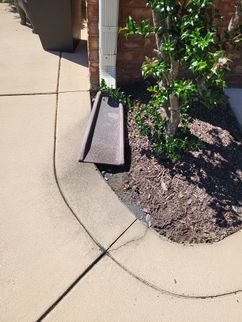
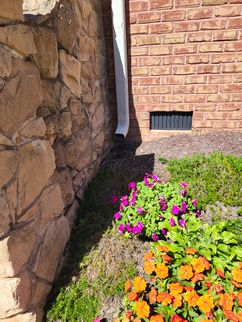
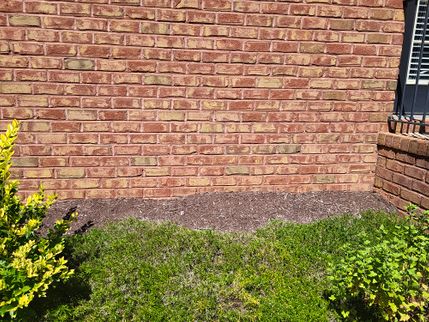
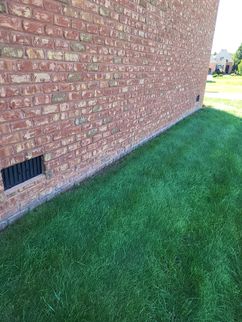

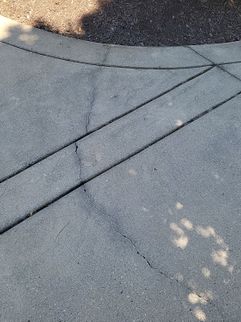
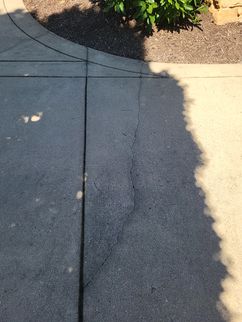
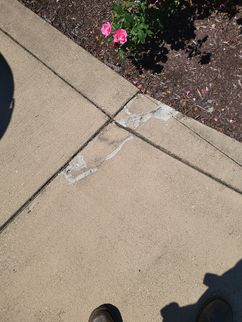
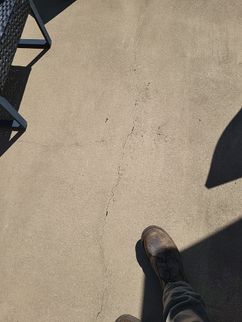
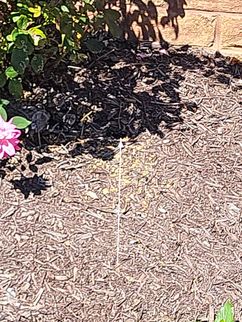
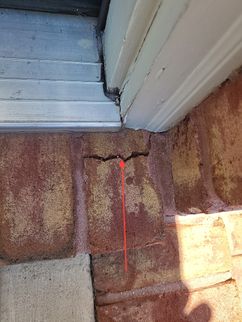
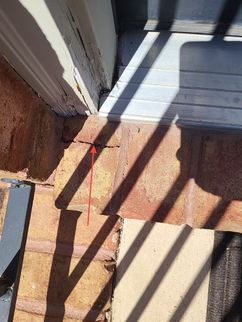
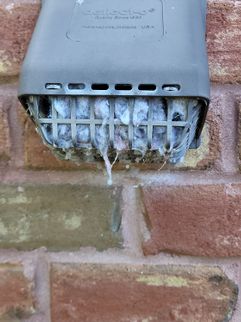

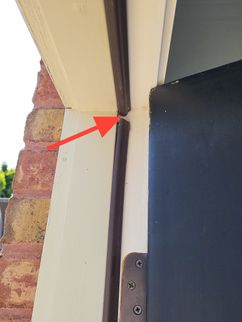
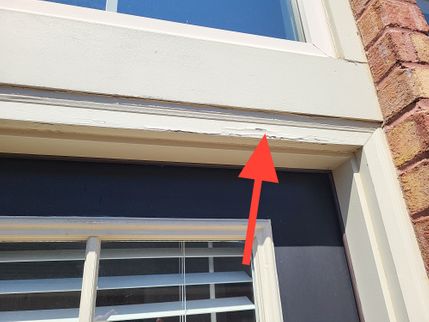
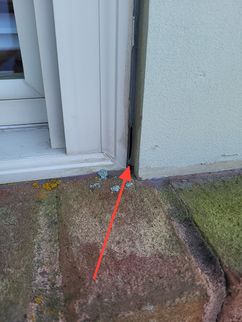
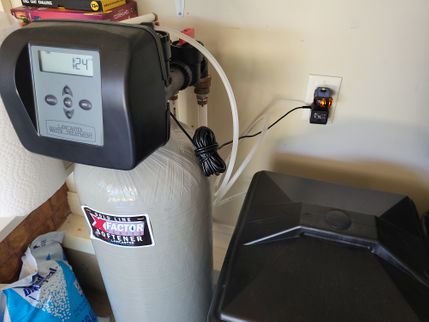
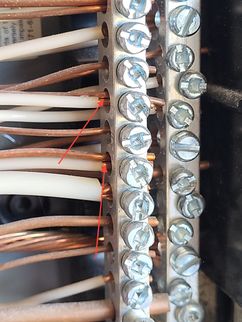
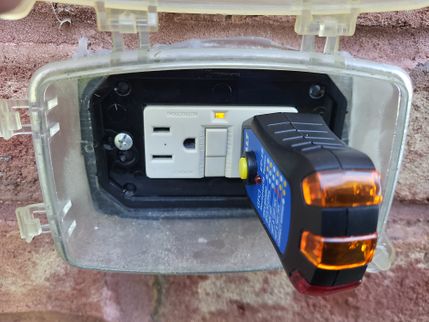
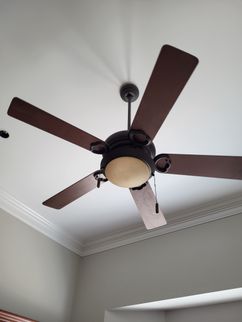
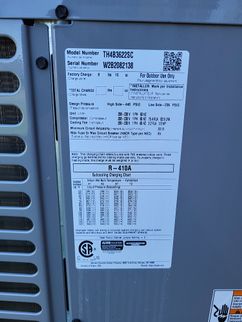
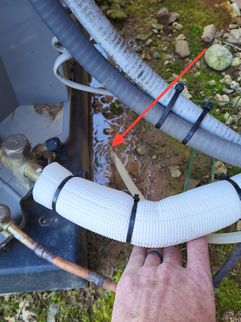
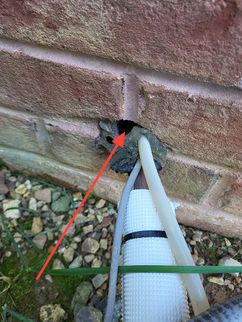

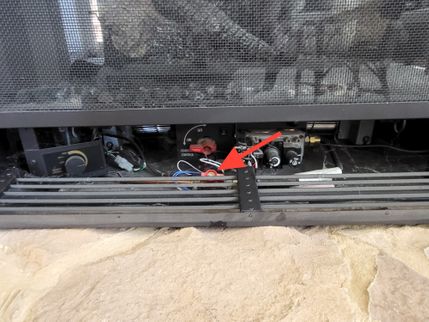
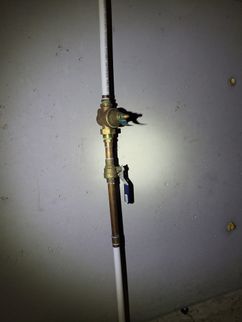

 (1) (1).jpg)
